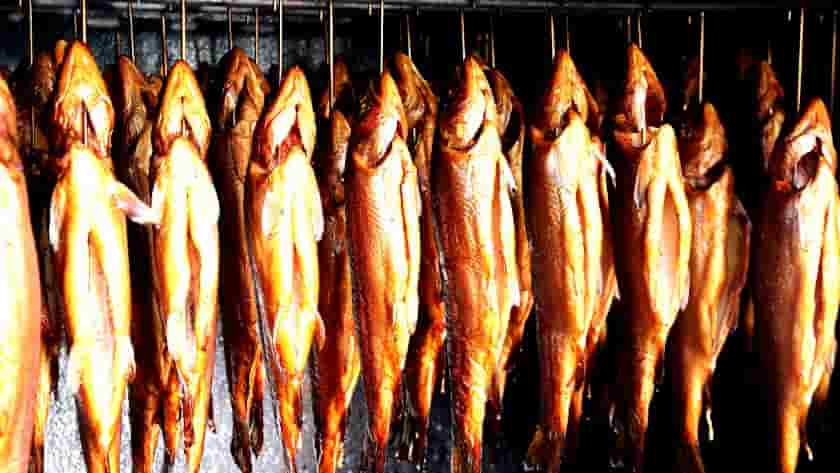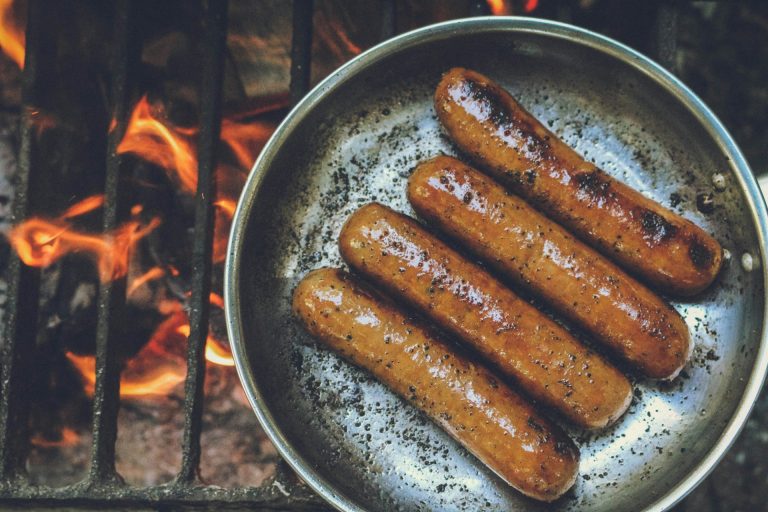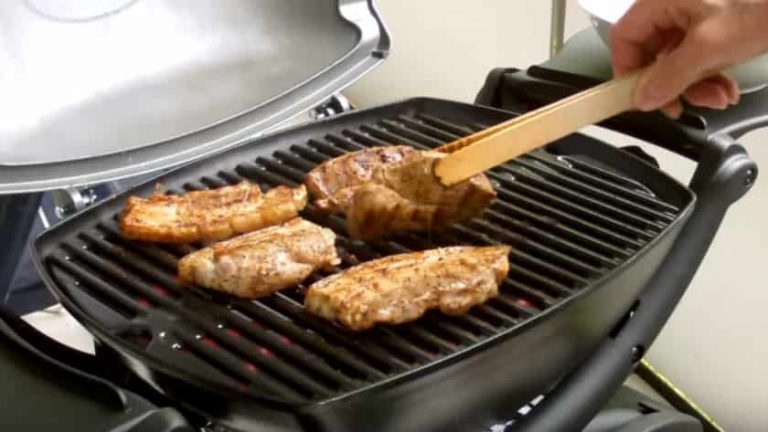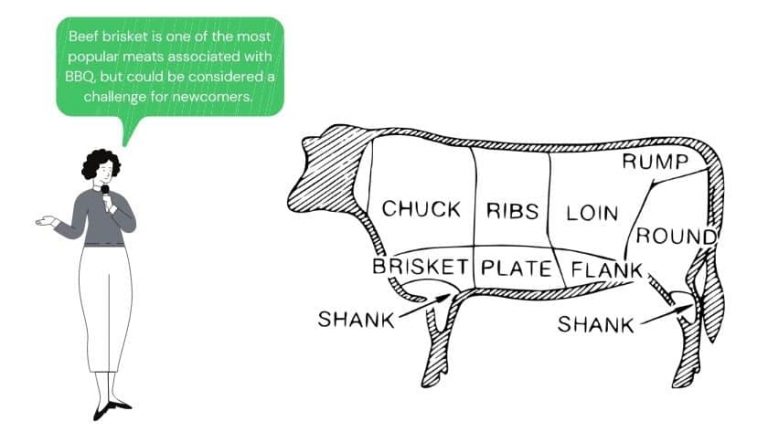Difference Between Hot Smoking And Cold Smoking?
When it comes to smoking meat, there are two main methods: hot smoking and cold smoking. Hot smoking is the process of cooking meat over a heat source, while cold smoking is the process of flavoring and preserving meat by exposing it to smoke at a low temperature.
This article will highlight the five common differences between hot smoking and cold smoking. But first, let us look at the definitions of the two terms; hot smoking and cold smoking.
What is Hot Smoking?
Hot smoking is a cooking technique in which food is exposed to smoke from burning combustible material, such as wood or charcoal.
This food preparation method is similar to dry-heat cooking methods like baking, roasting, and broiling in that it can be used for an extensive number of dishes—like beef jerky, hot dogs, and even cheeses.
Food that is prepared using the hot smoking technique is cooked to an internal temperature that reaches at least 150°F (65.5°C).
The smoke used in this cooking process can be obtained from the burning of hardwood, such as hickory or mesquite, or fruit woods like cherry and apple.
The main difference between hot smoking and cold smoking is that the food product to be smoked is cooked on racks in a heated chamber during the process.
The different types of food that can be prepared using this method are endless, but there are some considerations that must be made prior to beginning this culinary technique.
For instance, meat with high levels of moisture, such as fish and pork, must be brined, so the meat retains moisture during the smoking process. Leaner meats, like poultry and seafood, can be marinated in a flavorful liquid before being smoked to keep the food from drying out.
Hot smoking is also an effective way to add flavor to nuts and cheeses prior to serving.
This cooking method is generally used with the intent of creating a product that will be served without additional preparation, such as grilling or sautéing.
When hot smoking fish and other types of meat, you can add salt after it’s cooked to help draw out any remaining moisture from the surface of the dish, which helps the smoke adhere to the surface of the food.
This is why it’s important to brine your meat or fish before hot smoking, so it won’t dry out during the process.
What is Cold Smoking?
Cold smoking is a method of food preservation in which either natural smoke or smoke generated by indirect heat is used for cooking the food, but at lower temperatures.
This creates some interesting flavors while still allowing the food to last for three or more months without refrigeration. Cold smoking works on meat, seafood, nuts, seeds, and cheeses.
A smokehouse is needed for this process. A building partially enclosed by metal, concrete, or stone with an insulated roof, a smoke vent, and a fire pit are the basics for this kind of smoking.
The smoke that gives cold smoked food its flavor is created when wood chips are burned in the fire pit. The distance between the flames and the food varies according to the size of the food being smoked.
Meat is usually cold smoked for several hours per day over a period of one to two weeks.
One method is to place a handful of wood chips in a metal container and set them on fire, then place that container in the corner of the smokehouse or near a fire pit where a small amount of flame meets a lot of smoke.
Keep the fire smoldering for at least 30 minutes before adding food to be smoked.
5 Differences Between Hot & Cold Smoking?
Smoking food is a process that many people enjoy as a way of preserving meat, as well as giving it a specific flavor. In order to smoke food, you first need to set up your smoker, which can be done by following these steps.
However, there are two different ways of smoking food, known as hot smoking and cold smoking. These are very different processes that have unique differences in the meat that they produce.
There are five different differences between hot smoking and cold smoking, which this article will cover in detail below.
1) Temperature
It’s important to note that when you’re talking about “smoking” your food, you’re actually talking about cooking your food.
This is because the meat that comes out of a smoker is always fully cooked since smoking involves exposing it to very high temperatures for a long period of time.
Smoking food also gives it a unique flavor, which many people enjoy due to its smoked taste and different spices and ingredients (like woodchips) used.
According to buythermopro.com, smoking is typically done by exposing the meat to very high temperatures, which are extremely harmful if you were to touch them (between 85- and 250-degrees Fahrenheit).
Because of this fact, smokers are usually set up outside because they produce a lot of smoke due to burning woodchips. However, depending on what kind of smoker you have, the temperature is not too much of a problem.
This is because they often come with thermometers and sometimes even timers in order to ensure that your meat comes out perfect and cooked thoroughly and beautifully.
2) Time
In addition to temperatures, smoking food can also take anywhere from a few hours to even 24 hours or more.
The time it takes for the food to be smoked will depend on your smoker and what kind of meat you’re smoking. Meat Size, in addition to the temperature used, will also impact how much time it takes.
Some smokers even go up to 72 hours in order to give the food an exquisite flavor that cannot be replicated any other way.
3) No Air Flow
Due to the temperature and other various elements seen in hot smoking, it is impossible to use any kind of airflow because this will cause burning or overheating.
With cold smoking, however, you are able to control the airflow since it does not involve cooking your food.
This gives you more options when using a cold smoker since you can add different types of woodchips that give it a specific flavor.
4) Heat Distribution
As mentioned before, hot smoking involves using very high temperatures in order to cook the meat thoroughly.
This often leads to burning or overcooking certain parts of the meat, while other parts remain untouched and undercooked due to a lack of heat.
This can be prevented by regularly rotating the meat while smoking it, but it still remains an issue that is commonly seen in smokers.
5) Taste
As mentioned earlier, hot smoking gives your food a unique smoked flavor that many people enjoy. However, cold smoking does not give it this same flavor because of the lack of high heat.
However, this does not mean that the taste is worse than hot smoking. In fact, many people enjoy cold-smoked food much more since it has a different and diverse flavor profile than hot smoking.
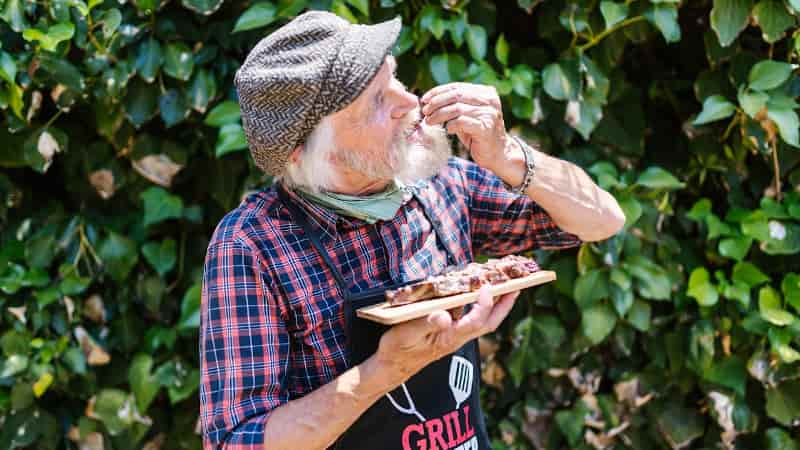
Health Benefits of Smoking Meat
There are ten benefits of smoking meat; they are as follows:
1. Aids in the digestion process
When you smoke meats, it gives it a unique flavor, adding to its overall taste.
The smoking process allows the meat’s fat to drip away from high temperatures, which aids in digestion, as well as giving them a low-fat percentage.
If you can’t afford to buy organic meats, smoking your meats is the best way to reduce the number of chemicals they will have in them.
2. Provides essential minerals including potassium, calcium, and magnesium
When you smoke meat over real wood chips, it gives it a unique flavor that is also healthy for you as well as adds nutritional value.
The burning of the wood creates heat which makes it able to penetrate deep inside the meat, giving it a texture and flavor you don’t usually get from regular grilling.
If you use applewood, hickory, or mesquite chips, your smoky meats will contain potassium, calcium, and magnesium, among other essential minerals.
3. Helps increase your metabolic rate
When you smoke meat at home, over real wood chips or pellets, it not only tastes amazing but also increases your metabolic rate.
If you buy organic meats, then the amount of fat that has been burnt off combined with the flavor will boost up your metabolism so it can function properly throughout the day.
If you have more energy, you are able to do more throughout the day, which will increase your health and strength.
4. Improves muscle movement by removing toxins from muscles
Smoked meats often taste better than grilled ones as it brings out the flavor of the meat you’re cooking.
These days due to lack of space on our properties, few of us are able to have an open fire to smoke our own meats. But there are many smokers for sale so you can buy one and do it at home.
According to tenderlicious.net, smoking your meat over an open fire means the meat becomes really hot, which helps remove toxins from muscles, providing them with more elasticity which in turn improves muscle movement.
5. Prevents blood clots by thinning your blood
The process of smoking meats naturally creates a thinner texture to the meat, meaning that it is healthier for you than other forms of cooking, such as roasting or boiling it.
A good example is using smoked bacon over regular bacon – the only difference would be the fact the smoked bacon has been exposed to heat over a period of time, whereas regular bacon just gets fried.
Smoked meats have a similar effect on blood, making it thin enough to prevent clots.
Bottom Line
The 5 differences between hot and cold smoking are that the food is cooked more quickly in hot smoking.
There’s less of a need for salt during cooking because of the high heat, you can’t eat the food right away with cold smoking because it must be smoked first before being eaten.
Smoke penetrates deep into meats like bacon or ham while they’re cold-smoked which means they don’t dry out as much and finally people prefer to use wood chips when doing this type of smoker.
Related Post To Consider
Traeger vs Z Grill: Which Is Better? Pellet Grill Comparison
Charcoal Smoker vs Electric Smoker: Which Is Better?
